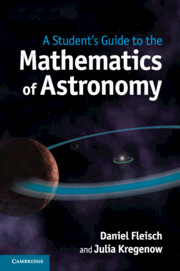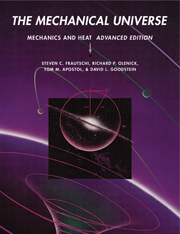Understanding the Universe
A student-active introduction to astronomy, emphasizing inquiry learning so students will clearly understand our universe and the scientific method. Within-text and end-of-chapter questions check understanding of concepts and require the student to think critically through astronomy-based problems. ‘Nature of Science' and 'Detectives on the Case' sections in each chapter encourage students to take on the role of a scientist and so develop an understanding of how scientific progress is made, leading students through a chain of arguments of forming and testing hypotheses, in the context of specific astronomical topics. By focusing on key topics, the student is able to develop a deeper understanding of the core areas of astronomy. Math is used to make intuitive points and kept simple by using a two-track system to first describe the logic of the calculation followed by a more detailed example. Simple illustrations support the text and step students through concepts visually.
- Student-active learning with an emphasis on inquiry learning focuses on how scientific theories are developed and regularly involves the student in the chain of arguments that lead to them
- Focuses on core topics, so that a deeper understanding of the Solar System and the Universe can be developed
- 'Detectives on the Case' and 'Nature of Science' sections acquaint students with science as a way of thinking, introduced throughout chapters in the context of specific astronomical topics
Reviews & endorsements
"… an inquiry approach that explores the nature of scientific research sets this book apart from other textbooks. The readings and exercises are scaffolded to allow the students to build their own understanding of the big ideas in astronomy. The separation into different math levels makes it appropriate for a wide range of classes. I really liked the problem sets that required students to describe the logic behind their solutions."
Dr Mary Kay Hemenway, University of Texas, Austin
"I have looked over the book and am impressed by what I see. Greenstein’s new book is a compelling and powerful introduction to astronomy, laying bare the fundamentals of scientific arguments and the scientific process."
Professor Steven Furlanetto, University of California, Los Angeles
"Understanding the Universe delivers on its promises. It is indeed inquiry based, and overtly uses astronomy as a means to explore the nature of science. We 'Astro 101' teachers often describe our efforts as attempts to show how science operates, but then fail to teach that way. We revert to what Greenstein describes as the 'shut up and learn' mode. This uniquely personal book, conventional in its structure, but unconventional in its insistence on clear and conversational explanations of core concepts, is a noble attempt to get the students to do the learning. Greenstein’s text does not merely tell students about the Universe; it helps them understand the Universe."
Professor Bruce Partridge, Haverford College, Pennsylvania
"George Greenstein has done an excellent job of clearly explaining the most important aspects of astronomy. His book brings the reader along on a journey of discovery and treats 'what we know' and 'how we know' as equally important. Exhorting students to actively participate rather than passively memorize reinforces a message that almost all instructors send. I encourage my colleagues teaching introductory astronomy to consider this book carefully."
Dr Pauline Barmby, Western University, Ontario, Canada
"This unique text provides a superb framework for introducing students to the approaches scientists take to solving problems. By posing a variety of 'mysteries' faced by both ancient and contemporary astronomers, gathering and presenting data, searching for patterns, asking questions, posing and testing hypotheses both qualitatively and quantitatively, Greenstein introduces his readers to the tools of the detective-scientist."
Dr Stephen Strom, National Optical Astronomy Observatory
"… an introductory textbook to be used in an astronomy course for nonscience majors, and I would definitely recommend it for that purpose …"
Physics Today
Product details
February 2013Paperback
9780521145329
658 pages
280 × 213 × 24 mm
1.43kg
513 b/w illus. 39 colour illus. 297 exercises
Available
Table of Contents
- Part I. Steps to Astronomy:
- 1. The sky
- 2. The origins of astronomy
- 3. Gravity and orbits
- 4. Light
- 5. The astronomers' tools: telescopes and space probes
- Part II. The Solar System:
- 6. Introducing the Solar System
- 7. The inner Solar System
- 8. The outer Solar System
- 9. Smaller bodies in the Solar System
- 10. Planets beyond the Solar System
- Part III. Stars:
- 11. Our Sun
- 12. A census of stars
- 13. The formation of stars and planets
- 14. Stellar structure
- 15. Stellar evolution and death
- Part IV. Galaxies and the Universe:
- 16. The Milky Way galaxy
- 17. Galaxies
- 18. Cosmology
- 19. Life in the Universe
- Index.






